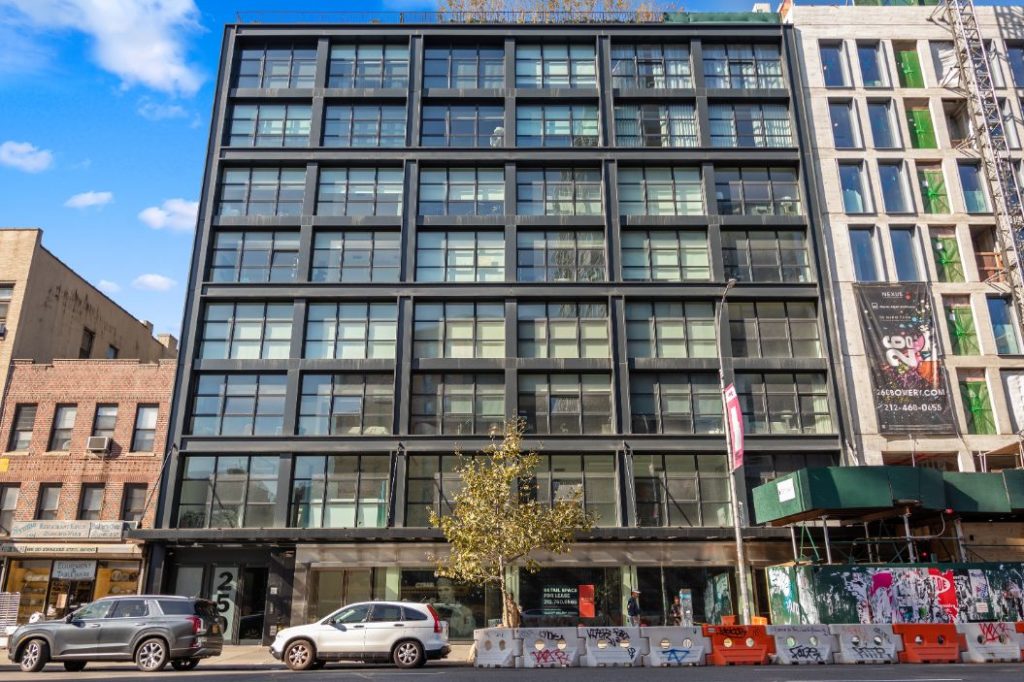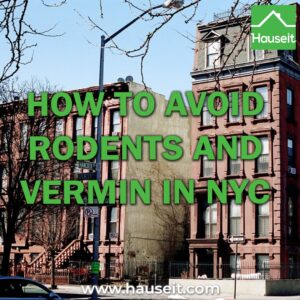Rodents and vermin are an unavoidable reality of living in NYC, but you can reduce the odds of an infestation by picking the right apartment in the right type building. We’ll go over several techniques to reduce your odds of insect and vermin problems when buying or renting a NYC home in this article.
Buying in NYC? Estimate your closing costs in NYC using Hauseit’s Buyer Closing Cost Calculator, and consider requesting a Hauseit Buyer Closing Credit to save money on your purchase.
Table of Contents:
Avoid garden level apartments
Do not live above a commercial space
Avoid pre-war buildings
Stay away from brownstones
Consider newer buildings
Look for gut renovated apartments
Avoid buildings next to parks and vacant lots
Don’t live on a street with lots of restaurants
Inspect the basement
Don’t live near a construction site
Inspect the kitchen and bathrooms
Avoid garden level apartments
Garden level apartments in NYC are notorious for rodent and vermin problems. Critters originate from ground level, so first floor units (garden apartments) are naturally the first point of entry for adventurous critters.
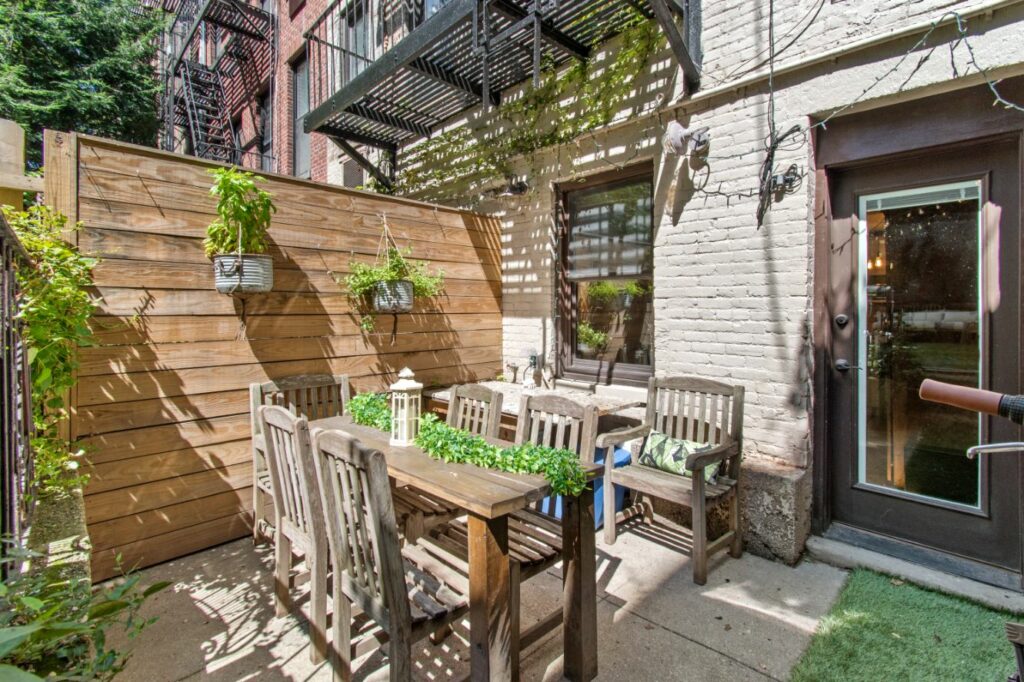
The risk of rodent and vermin issues in a ground floor apartment is particularly acute in older buildings, as there will be more potential entry points. Unlike a new construction building, an older apartment building has likely had several plumbing, HVAC, internet and other utility-related retrofits over the years which has resulted in additional exterior penetrations to the building.
While old conduit lines and other entry points are typically sealed, quality construction is never a sure thing in NYC. Moreover, any sealers such as caulking crack and deteriorate over time. This will eventually create entry points for critters.
Be cautious even if you’re considering a garden level apartment in a brand new condo or rental building. The fact that a building is new doesn’t change the reality that the ground floor is a natural collection point for water and moisture, both of which attract critters.
Living directly above a commercial space in NYC is a recipe for disaster when it comes to rodents and vermin. If you live above a restaurant or bar, the commercial kitchen will attract critters that will inevitably attempt to enter your apartment.
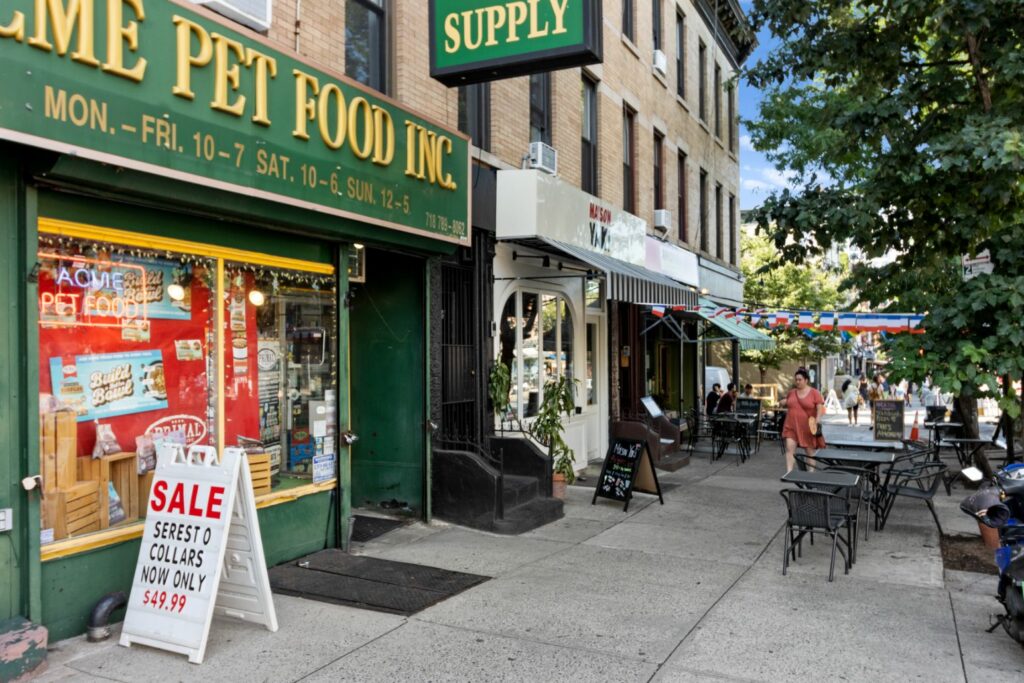
Even if the restaurant or bar maintains the highest standards of cleanliness, there’s simply no way to avoid critters. For example, the business will almost certainly store trash somewhere outside the building until it’s collected. Food items will also be stored in the kitchen. Both act as a magnet for rodents and vermin, even if the kitchen itself is cleaned religiously.
Living above a commercial space is still a problem even if the business doesn’t serve food. In fact, any business with foot traffic is going to be a problem. This is because both people and things are constantly going in and out, facilitating the entry of critters.
Roaches have been known to hide and breed in cardboard boxes and consume all types of organic materials, including books. Now you can start to see why that seemingly innocuous bookstore or UPS drop-off location beneath your apartment isn’t so innocent when it comes to critter problems in your apartment.
A Full Service Listing for 1%
Sell your home with a traditional full service listing for just one percent commission.
Despite their charm, pre-war buildings are the preferred target for rodents and vermin. This is because older buildings have more cracks, crevices, conduits and voids which critters can use to nest and travel throughout the building.
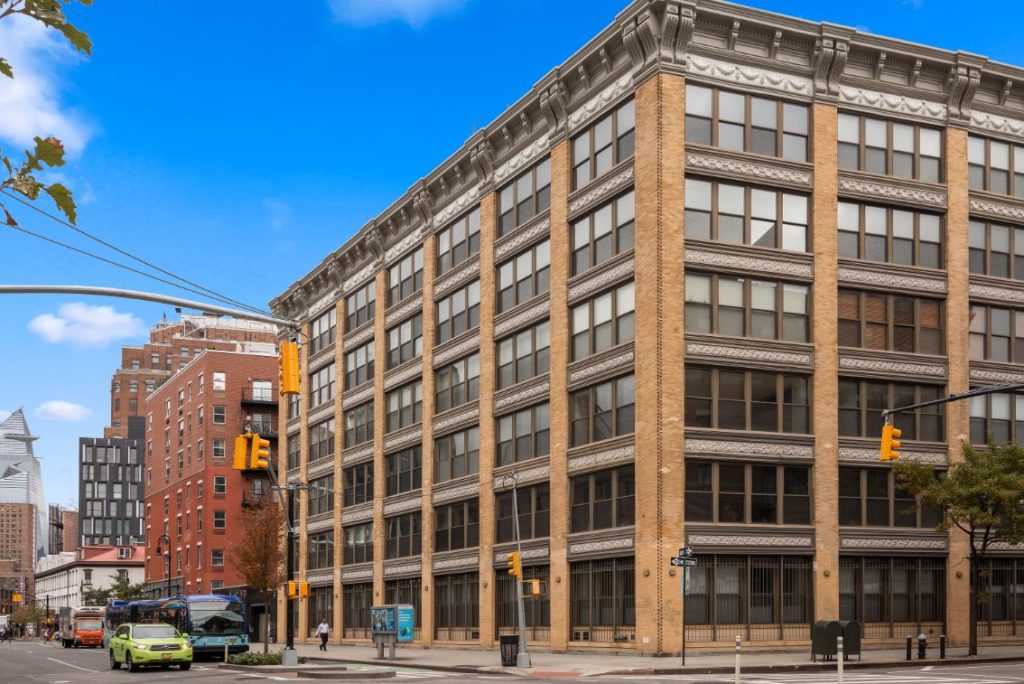
These additional voids are a result of routine repairs and mechanical retrofits which naturally have happened a greater number of times in older vs. newer buildings.
Original Hardwood Floors
Original (or simply older) hardwood floors naturally warp, shrink and crack over time, and this creates gaps for insects. The risk is greatest in the case of hardwood floors which are installed directly on top of floor joists (as opposed to being laid on top of a subfloor).
It’s also possible for newly installed hardwood floors to have large gaps if the boards were installed before the moisture was allowed to equalize with the room. Typically, hardwood floors are left in the room where they’re being installed for at least a week prior to the installation in order to facilitate moisture equalization.
We’ve even seen instances where newly installed floors in brand new buildings end up having egregiously large gaps between each floorboard. While the floor likely looked fine when it was installed, the gaps appeared as the wood naturally contracted while releasing moisture.
Had the contractor allowed the wood to acclimate to the room and appropriately tested the wood with a moisture meter prior to installation, the risk of this happening would have been much lower.
Baseboards
The intersection between baseboards and hardwood floors is a common entry point for insects. While the perimeter of a room where the floor meets baseboards can easily be caulked, the natural seasonal expansion and contraction of wood often cracks caulking and creates new crevices for insects.
Retrofit of HVAC Systems
If any apartment in the building installs a new HVAC system, new conduit lines will have to be run from the compressor (which is most likely on the roof) directly into the apartment. This may necessitate several new exterior penetrations of the building’s facade or roof membrane, in addition to opening walls within the unit itself.
Based on our experience with contractors in NYC, the odds are extremely low that the construction crew will completely seal any old penetrations and fill 100% of any voids/holes created from the new HVAC system installation. If there’s just one crack or opening, vermin can enter the building and/or your apartment.
Radiator Steam Pipe Repair
Routine radiator repair work typically results in some movement to the riser pipes, and this can loosen surrounding caulking and flanges. This creates an entry point in your apartment for roaches who are traveling up the riser pipe from the basement.
Kitchen & Bathroom Plumbing
The walls surrounding kitchen and bathroom water and drain pipes are rarely perfectly sealed in pre-war buildings due to the sheer number of repairs which have likely taken place over the years. In our experience, plumbers in NYC typically pay very little attention to sealing any cracks or crevices around pipes. As soon as the leak is fixed, they’re usually out the door having done nothing more than a very minimal sweeping of large debris.
In addition to wall crevices surrounding pipes, it’s common for there to be gaps or holes in the drywall behind kitchen cabinets.
This is a perfect hiding place for vermin after they’re done feasting on food scraps and moisture in the kitchen.
The only way in which the kitchen and baths in a pre-war building are perfectly sealed is if the apartment was gut renovated down to the studs. Even then, odds are that the contractors didn’t seal every last crevice.
Contractors in NYC regularly cut corners, especially if the owner isn’t very involved in the day-to-day management of the job. As an owner, you pretty much have to be on-site and conduct routine daily inspections in order to guarantee that your contractor has adequately sealed all entry points in the apartment.
Stay away from brownstones
Virtually all brownstones in NYC are pre-war buildings, so townhouses carry the same risk of rodents and vermin infestation as any pre-war structure.
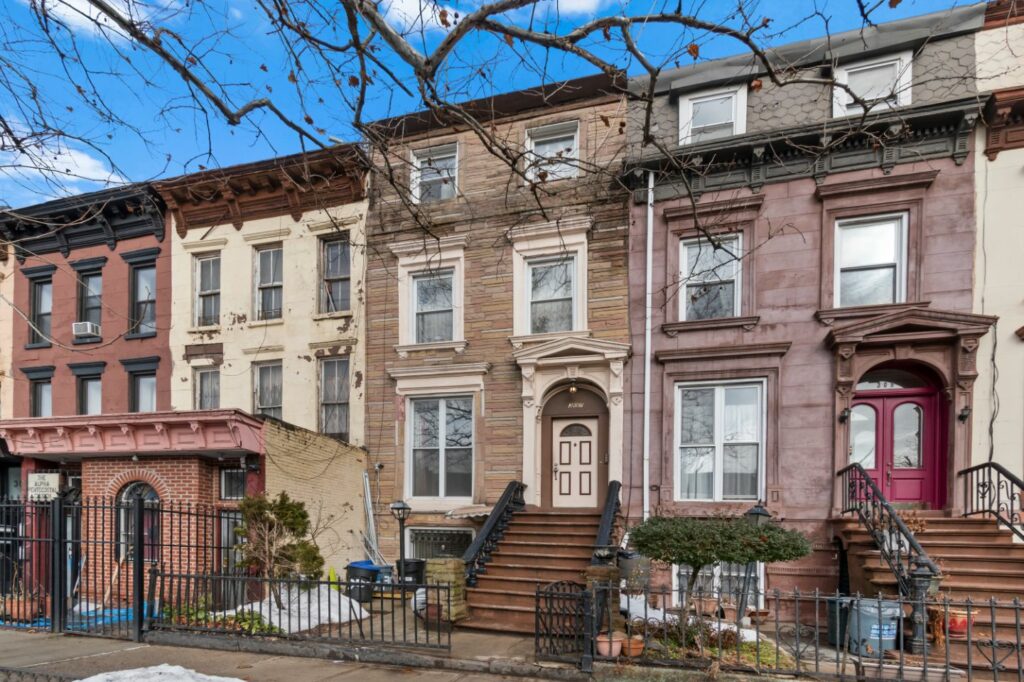
However, brownstones are often worse than medium or large size pre-war buildings because of the fact that many townhouse owners neglect their homes over the years.
Larger buildings, on the other hand, have higher odds of having been adequately maintained since there’s usually a management company, a live-in super and more 3rd party involvement with respect to routine inspections.
Another problem with brownstones is the fact that they’re rarely taller than 3 or 4 stories. This means there’s no way for you to simply opt for a higher floor as a means of reducing the risk of rodent and vermin infestation, as would be the case in a taller pre-war building.
Newer buildings are far less likely to attract rodents and vermin. This is because fewer repairs and retrofits have taken place in the building, meaning there are fewer cracks, crevices and conduits for rodents and vermin to travel through.
